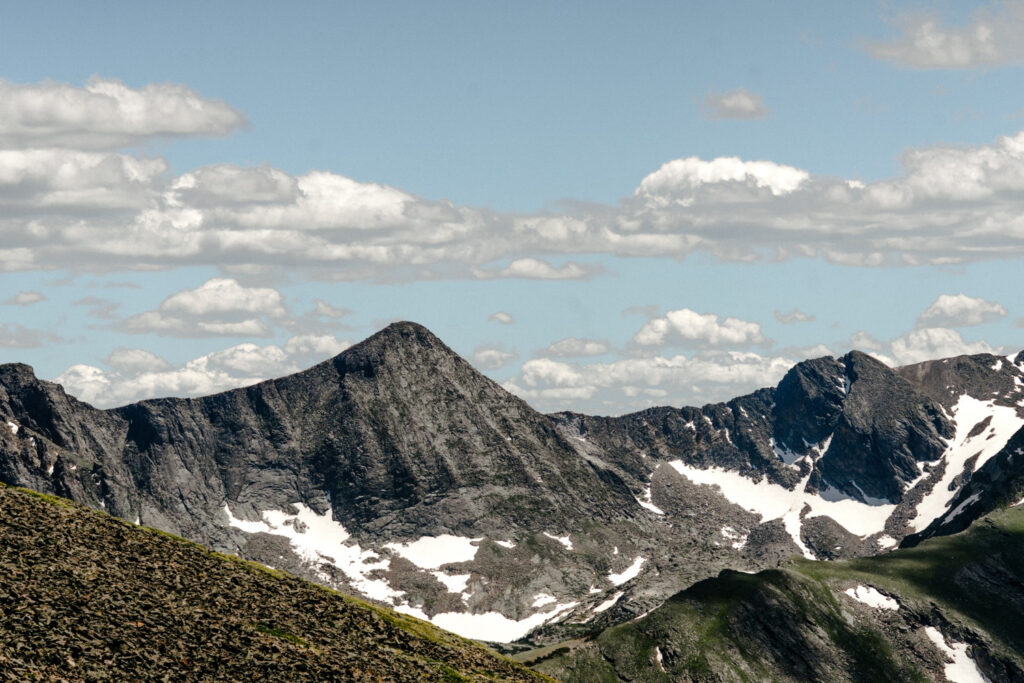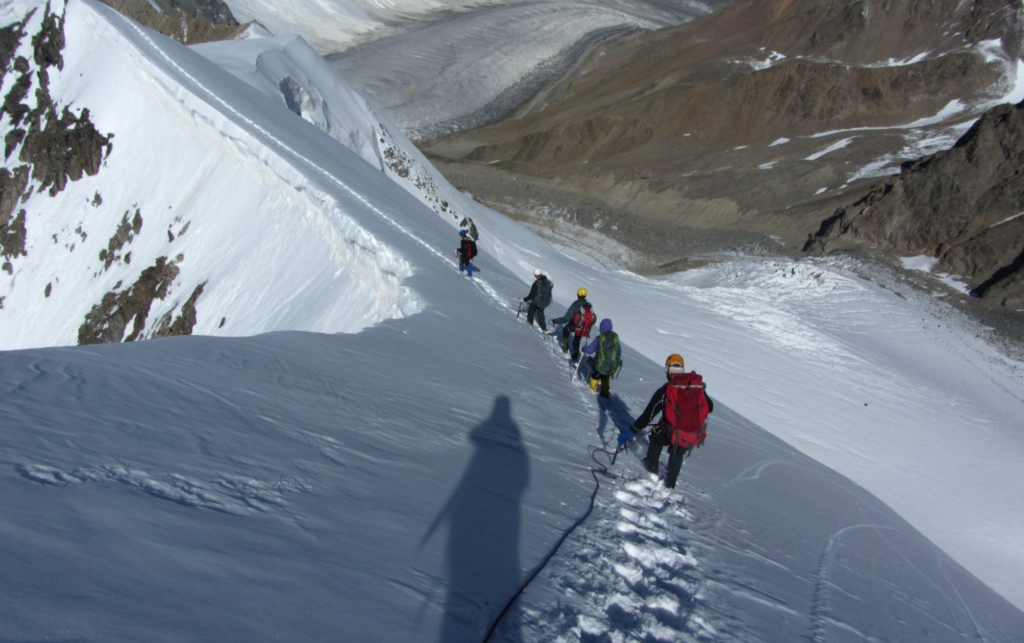
The Bezengi Glacier is a majestic natural wonder located in the Caucasus Mountains, specifically in the Bezengi Valley of the Kabardino-Balkaria region in Russia. With its awe-inspiring beauty and impressive size, the glacier has captivated the imaginations of explorers, mountaineers, and nature enthusiasts for decades.
Area covered by Bezengi Glacier
Stretching across a distance of approximately 16 kilometers (10 miles) and covering an area of about 34 square kilometers (13 square miles), the Bezengi Glacier is one of the largest and most significant glaciers in the Caucasus region. It is situated at an altitude ranging from 2,000 to 4,000 meters (6,500 to 13,000 feet) above sea level.
The glacier is nestled within a picturesque valley adorned with towering peaks, deep crevasses, and pristine white ice. The surrounding landscape is a breathtaking sight, offering a combination of rugged beauty and serene tranquility. The Bezengi Valley itself is a lush and verdant expanse, home to rich biodiversity and a diverse array of flora and fauna.
Primary Attraction
One of the primary attractions of the Bezengi Glacier is its prominence as a mountaineering destination. The region attracts climbers from all corners of the globe, enticed by the challenging and technical climbs available in the area. The glacier serves as a base for expeditions to nearby peaks, including the formidable Mount Dykh-Tau and Mount Shkhara, which are among the highest mountains in Europe. These peaks offer a thrilling and demanding climbing experience, drawing experienced mountaineers seeking adventure and conquest.

Best things about Bezengi Glacier
Mountaineering enthusiasts flock to the Bezengi Glacier not only for the adrenaline-pumping climbs but also for the opportunity to immerse themselves in the natural grandeur of the area. The glacier’s cascading icefalls, imposing seracs, and vast snowfields create a visually stunning backdrop for these daring expeditions. The sense of awe and accomplishment that climbers experience when conquering the peaks and navigating the icy terrain is unparalleled.
Beyond its allure for mountaineers, the Bezengi Glacier holds significant scientific importance. Glaciers serve as sensitive indicators of climate change, and the Bezengi Glacier is no exception. Over the years, it has been impacted by the effects of global warming, leading to its gradual retreat. Scientists closely monitor the glacier’s movements, studying its behavior, and gathering data to better understand the dynamics of glacial systems and the implications of climate change on these icy giants.
Water Resources
The Bezengi Glacier also plays a crucial role in regulating water resources in the region. Glaciers serve as natural reservoirs, storing vast amounts of water in the form of ice. As the glacier melts, it feeds into rivers and streams, providing a vital water source for both human and natural ecosystems downstream. Understanding the glacier’s health and the changes it undergoes is crucial for managing water resources effectively and mitigating potential risks associated with glacial meltwater.
Surrounding Area of Bezengi Glacier
The Bezengi Glacier and its surrounding area offer more than just mountaineering and scientific exploration. The region boasts a rich cultural heritage, with diverse ethnic communities inhabiting the valleys and villages nearby. Visitors have the opportunity to immerse themselves in the local culture, interact with the friendly residents, and gain insights into the traditional way of life in the Caucasus Mountains.
Exploring the Bezengi Glacier and the Bezengi Valley is an adventure that allows visitors to connect with nature, witness breathtaking landscapes, and challenge their physical and mental limits. The experience offers a unique blend of adrenaline, tranquility, and natural beauty that is difficult to find elsewhere.
However, it is essential to approach the Bezengi Glacier and its surroundings with caution and respect for the environment. Glaciers are fragile ecosystems, and the impacts of climate change pose significant threats to their existence. Visitors should adhere to responsible tourism practices, ensuring that their activities have minimal impact on the delicate balance of the glacier and its surrounding ecosystem.
Final thoughts
In conclusion, the Bezengi Glacier stands as a testament to the remarkable beauty and power of nature. Its massive expanse of ice, jagged peaks, and captivating scenery make it a magnet for adventurers, mountaineers, and nature enthusiasts. Whether it’s scaling the challenging peaks, witnessing the glacier’s awe-inspiring formations, or simply immersing oneself in the tranquility of the surrounding valley, the Bezengi Glacier offers a truly unforgettable experience that showcases the magnificence of our natural world.
28 Comments
buy atorvastatin 20mg for sale purchase lipitor atorvastatin 80mg drug
propecia where to buy buy fluconazole without a prescription how to get diflucan without a prescription
ciprofloxacin 500mg for sale – buy ciprofloxacin 1000mg pill clavulanate brand
cheap ciprofloxacin 1000mg – order keflex 250mg without prescription order generic augmentin 375mg
order metronidazole 400mg for sale – flagyl 400mg drug zithromax cost
order ciplox 500 mg online cheap – buy erythromycin 500mg pills erythromycin 250mg ca
buy valtrex paypal – purchase nemasole without prescription acyclovir pill
ivermectin 3 mg oral – buy ciplox purchase sumycin online
flagyl 400mg price – buy clindamycin cheap purchase zithromax generic
ampicillin antibiotic how to buy penicillin amoxicillin oral
buy lasix pill diuretic – warfarin over the counter order capoten 25 mg sale
buy glycomet 500mg without prescription – order metformin without prescription brand lincomycin
buy zidovudine 300mg generic – buy epivir 100mg generic zyloprim 300mg brand
buy clozaril 50mg generic – glimepiride 4mg ca pepcid without prescription
seroquel tablet – brand zoloft purchase eskalith pill
purchase clomipramine generic – how to get imipramine without a prescription sinequan us
hydroxyzine 10mg generic – atarax 25mg pills oral amitriptyline
amoxicillin usa – erythromycin price buy cipro 1000mg
buy augmentin medication – purchase linezolid pill buy baycip without prescription
buy cleocin pills – how to get vantin without a prescription order chloromycetin
brand azithromycin 500mg – buy tetracycline 500mg pills buy ciprofloxacin pills
buy ivermectin 12 mg online – buy oral stromectol order cefaclor 500mg generic
oral albuterol – theo-24 Cr 400 mg canada order theo-24 Cr 400mg online cheap
buy generic clarinex over the counter – buy flixotide online cheap buy ventolin 4mg pills
buy methylprednisolone without a prescription – cheap fluorometholone where can i buy astelin
glyburide over the counter – glucotrol usa forxiga 10 mg pill
buy repaglinide without a prescription – buy jardiance 10mg without prescription order empagliflozin 25mg generic
glucophage sale – buy glucophage generic order precose for sale